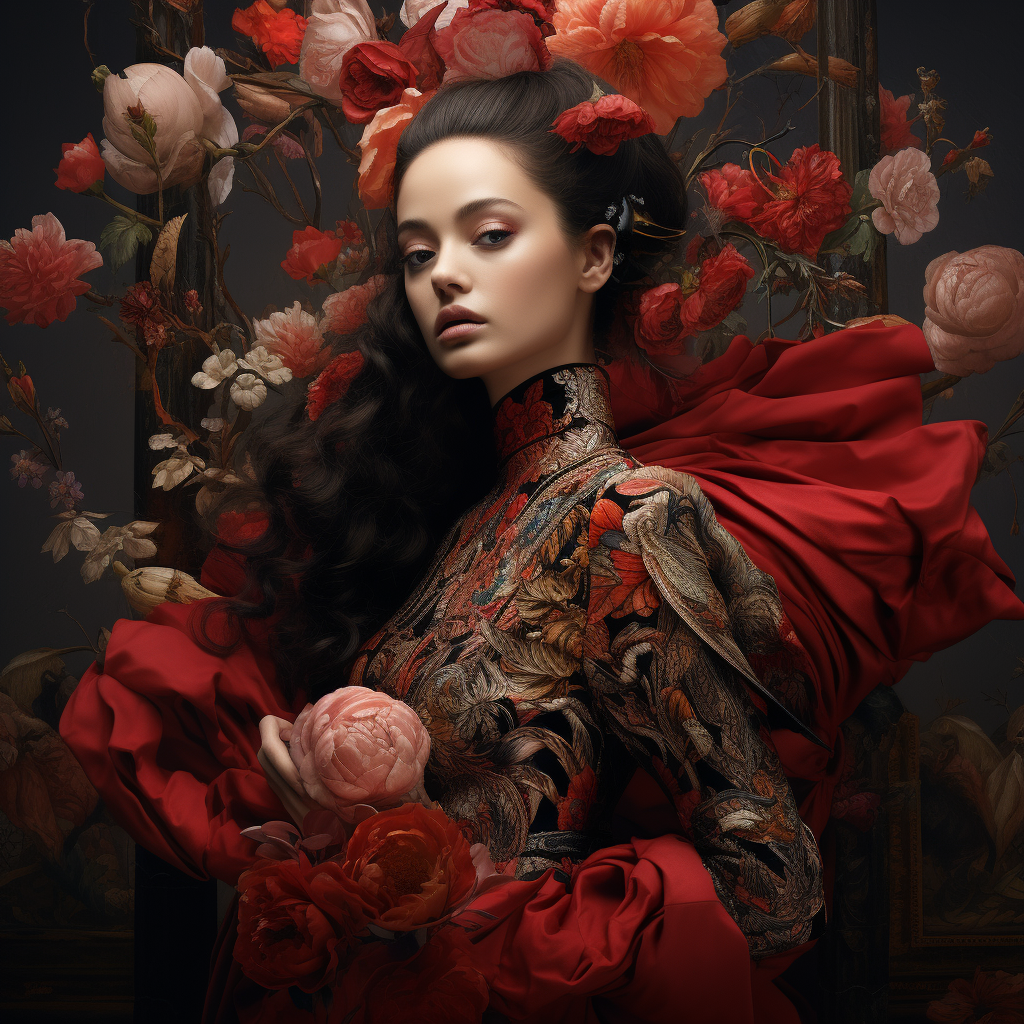Promoting Women's Fashion on Social Media: A Comprehensive Guide


In today's digital age, the symbiotic relationship between social media and the fashion industry is undeniable. Not only has social media transformed the way brands communicate with their audiences, but it has also reshaped the purchasing decisions of millions worldwide. For women's clothing brands especially, social media offers a dynamic platform to showcase products, tell their brand story, and connect directly with their target demographic.
Fashion, intrinsically visual and ever-evolving, finds its perfect partner in platforms like Instagram and Pinterest, where images and aesthetics reign supreme. The appeal isn't solely about visibility, though that's undoubtedly a major perk. It's about community, engagement, and real-time connection. A well-timed post, an engaging story, or a viral challenge can boost a brand from obscurity to a household name almost overnight.
Given the significance of social media in modern consumer behavior, understanding its role in promoting women's clothing brands becomes not just beneficial, but essential for success in the fashion industry. In the subsequent chapters, we will delve into the strategies, platforms, and best practices that fashion brands can employ, underpinned by real data and case studies. We'll also explore potential pitfalls, ensuring that brands not only shine on social media but also thrive in a sustainable, authentic manner.
The Rise of Social Media in the Fashion Industry
Fashion, a realm of creativity, aesthetics, and personal expression, has always been heavily influenced by societal and technological changes. As digital platforms grew, their influence became more and more evident in the world of fashion. Today, the convergence of fashion and social media is so intertwined that it's hard to remember a time when the two existed separately.
Historical Context
Before the digital era, fashion brands predominantly relied on traditional media like magazines, newspapers, and television to communicate trends and showcase collections. These channels, although effective, had their limitations. The dissemination of trends was slow, and consumers often had to wait weeks or even months to catch up with the latest styles. Furthermore, there was a clear boundary between consumers and creators. The dialogue was primarily one-way, with brands sending out messages and consumers passively receiving them.
Fast forward to the early 2000s, platforms like MySpace, followed by Facebook and Twitter, began to take shape. These platforms, while not fashion-centric, gave brands a new way to interact with consumers. The real game-changer, however, came in 2010 with the birth of Instagram. Its image-centered design provided the perfect canvas for fashion brands to showcase their creations, drawing in millions of fashion enthusiasts.
Data-Driven Insights
According to a report by Statista, as of 2021:
- Over 40% of global internet users aged 16 to 64 bought clothing online monthly, with a significant chunk citing social media as an inspiration.
- Instagram, with its 1 billion monthly active users, hosted over 25 million business profiles, a large proportion of which belonged to fashion brands.
- 70% of fashion enthusiasts said they discovered new brands on Instagram.
The Domino Effect
The power of social media lies not just in its reach but also in its ability to spark movements and trends. A celebrity wearing a unique outfit can lead to it trending across social platforms within hours. A viral TikTok challenge involving a specific style or accessory can lead to a surge in demand almost overnight. These digital domino effects are phenomena that the pre-social media fashion world could never have predicted.
In conclusion, the rise of social media has democratized fashion in unprecedented ways. Not only has it made fashion more accessible, but it has also broken down the walls between brands and consumers, fostering a two-way dialogue that has reshaped the industry from the ground up.
Importance of Social Media for Women's Clothing Brands
In today's digital-driven world, social media isn't just an option for women's clothing brands—it's a necessity. From brand awareness to sales conversion, the advantages of a strong online presence are manifold. Let's explore why it's imperative for women's clothing brands to leverage social media.
Immediate Brand Awareness
In the fast-paced realm of fashion, being out of sight means being out of mind. Social media offers brands the visibility they need to stay relevant. A single post, when done right, can reach thousands, if not millions. Platforms like Instagram and Pinterest also allow for visually appealing content, resonating with the very nature of fashion.
Fact Check: As per a study by Sprout Social, 91% of all retail brands use two or more social media channels, and the average user spends about 2 hours and 22 minutes on social networks and messaging.
Direct Consumer Engagement
Social media platforms provide a unique opportunity for brands to engage directly with their audience. Whether it's through comments, polls, or direct messages, this two-way interaction builds a relationship of trust and loyalty. Moreover, it offers brands real-time feedback, helping them pivot or modify their strategies.
Sales Conversion & Retention
While the primary role of social media was once brand promotion, it has quickly evolved into a potent sales tool. Features like "shop now" or "swipe up to buy" have transformed platforms like Instagram from mere showcases to bustling digital marketplaces. Moreover, regular interaction keeps brands in the consumer's mind, ensuring both sales and retention.
Fact Check: According to Instagram Business, 60% of users discover new products on Instagram, and over 200 million users visit at least one business profile daily.
Trend Analysis & Forecasting
Social media is the pulse of the modern fashion industry. It’s where trends are born, evolve, and sometimes die. Brands that actively engage on these platforms can gauge what's trending, what's not, and predict future directions. This information is invaluable in designing collections and marketing strategies.
Authenticity & Brand Story
Modern consumers, especially millennials and Gen Z, crave authenticity. They want to know the story behind the brand, its values, and its journey. Social media offers a platform for brands to communicate this narrative, be it through posts, stories, or long-form content like IGTV.
Inclusivity & Diversity
One of the most significant shifts driven by social media in the fashion industry is the move towards more inclusivity and diversity. Brands can use these platforms to showcase a wide range of body types, ethnicities, and styles, catering to a global audience and breaking traditional norms.
In essence, for women's clothing brands, social media isn't just about marketing—it's about building a community, understanding and responding to audience needs, and carving out a niche in an overcrowded market.
Platforms to Consider and Their Unique Advantages
The landscape of social media is vast, with each platform offering unique advantages tailored to different brand objectives. For women's clothing brands, choosing the right platform is crucial to resonating with the target audience and achieving marketing goals. Let's delve into some of the key platforms and what they bring to the table.
Instagram: A Visual Storyboard
Instagram's visual-centric design is tailor-made for the fashion industry. It's the perfect platform to showcase collections, behind-the-scenes looks, and brand narratives through images and videos.
Unique Advantages:
- Stories & Reels: These short-lived content formats allow for creativity, promotions, and instant engagement.
- IGTV & Live: Long-form content and real-time interactions are perfect for launches, interviews, or detailed showcases.
- Shopping Feature: Directly tag products in posts, making it easier for followers to purchase.
- Data Dive: As per Instagram Business, 70% of shopping enthusiasts turn to Instagram for product discovery.
Facebook: Engaging the Community
While younger demographics are drifting towards other platforms, Facebook remains a potent tool for community building and engagement, especially with the 30+ age group.
Unique Advantages:
- Groups: Create or engage with niche fashion communities for discussions, feedback, and promotions.
- Facebook Shop: A seamless shopping experience integrated within the platform.
- Ads: Targeted ad campaigns based on user behavior, interests, and more.
- Pinterest: Inspiring the Fashion-Conscious
Pinterest is where users go for inspiration. From daily outfits to wedding dresses, the platform is rife with fashion ideas, making it an ideal place for brands to showcase their collections.
Unique Advantages:
- Boards: Curate themed collections, allowing users to visualize and plan outfits or looks.
- Shopping Pins: Direct users from Pins to purchase pages, streamlining the shopping process.
- Visual Search: Users can search for products using images, perfect for fashion discovery.
- Data Dive: According to Pinterest Business, 70% of Pinners use the platform to find new and interesting products.
TikTok: Short-Form Content and Trends
TikTok, with its short, engaging videos and immense virality potential, is a goldmine for brands aiming to target Gen Z and younger millennials.
Unique Advantages:
- Viral Challenges: Engage users with fashion challenges, promoting brand awareness.
- Tutorials: Showcase clothing versatility, styling tips, and more in quick videos.
- Influencer Collaborations: Partner with popular TikTokers for brand promotions.
- Data Dive: As per a report by Backlinko, TikTok boasts over 2 billion downloads globally, with users spending an average of 52 minutes per day on the platform.
In conclusion, while all these platforms offer unique benefits, it's essential for brands to identify where their target audience spends the most time and tailor their strategy accordingly.
Strategies for Effective Promotion
Having understood the significance of various platforms, let's move to the crux of our topic: the strategies. Promoting a women's clothing brand effectively on social media isn't about random posts or generic campaigns. It's about understanding your audience, leveraging the unique features of each platform, and creating authentic, engaging content. Here's a breakdown of strategies that have proven effective for fashion brands.
Influencer Collaborations
In the fashion world, influencers play a pivotal role. These are individuals who have carved a niche for themselves, earning the trust and admiration of their followers.
How it Works:
- Identifying the Right Match: Brands should collaborate with influencers whose style and audience align with their ethos.
- Sponsored Posts: Influencers wear and showcase your clothing, providing authenticity to their audience.
- Giveaways: Engage both your and the influencer's audience with contests and giveaways, boosting brand visibility.
- Fact Check: According to a study by Mediakix, influencer marketing can deliver 11 times the ROI of traditional advertising.
User-Generated Content (UGC)
UGC is content created by consumers and can include posts, stories, reviews, and more. It’s authentic, relatable, and offers brands a plethora of promotional material.
How it Works:
- Encourage Sharing: Ask customers to share their looks or experiences with specific hashtags.
- Repost: Share UGC on your official channels, giving credit to the creator. This not only provides content but also fosters community loyalty.
- Testimonials: Positive reviews can be highlighted, building trust with potential customers.
Real-time Engagement
Engaging with your audience in real-time humanizes your brand and builds a sense of community.
How it Works:
- Q&A Sessions: Use platforms like Instagram Live or Twitter to conduct Q&A sessions.
- Polls & Quizzes: Engage your audience with interactive content, asking for their opinions on upcoming collections, fashion trends, etc.
- Flash Sales: Announce limited-time offers exclusively on social media platforms.
Behind-the-Scenes Looks
Giving your audience a peek behind the curtain makes them feel involved and valued.
How it Works:
- Creation Process: Showcase the journey of a piece, from design sketches to final product.
- Team Introductions: Introduce members of your team, adding a personal touch to the brand.
- Fashion Shows: Share glimpses of runway shows, fittings, and backstage action.
Leveraging Trends and Challenges
Stay updated with trending challenges or themes on platforms like TikTok and Instagram and leverage them.
How it Works:
- Trend Integration: If a particular style or challenge is trending, adapt it to fit your brand and products.
- Create Challenges: Start your own fashion-centric challenge, encouraging participation and brand engagement.
In essence, the key to effective promotion is authenticity, engagement, and adaptability. Brands should listen to their audience, evolve with changing trends, and above all, stay true to their core values and ethos.
Measuring Success and Adapting Strategies
Once the strategies are in place and your brand is actively engaging with the audience on social media, the next essential step is to evaluate the effectiveness of these efforts. Tracking, measuring, and adapting based on these evaluations ensures that your brand remains on the path to success. Here's how to go about it:
Key Performance Indicators (KPIs)
Understanding and monitoring the right KPIs can offer valuable insights into your brand's performance on social media.
Core KPIs for Fashion Brands Include:
- Engagement Rate: Measures interactions like likes, comments, and shares relative to your total followers. It indicates how resonant and appealing your content is.
- Conversion Rate: Evaluates how many clicks or interactions lead to a desired action, such as a purchase or newsletter sign-up.
- Reach and Impressions: Tracks how many people have seen your post and how often.
- Return on Investment (ROI): Assesses the financial returns on your social media campaigns relative to their cost.
- Fact Check: According to HubSpot, 76% of marketers use engagement as a key metric to evaluate social media success.
Analytics Tools
Leveraging analytics tools can help decipher these KPIs, offering a clear picture of performance.
Popular Tools Include:
- Platform-specific Insights: Platforms like Instagram, Facebook, and Twitter offer in-built analytics tools that provide detailed metrics about post-performance and audience demographics.
- Google Analytics: For those directing traffic to a website, Google Analytics provides insights into user behavior, conversion paths, and more.
Third-party Solutions: Tools like Sprout Social, Hootsuite, and Buffer offer comprehensive analytics and reporting features.
Feedback and Reviews
Listening to your audience can offer invaluable insights. Regularly monitor comments, messages, and reviews to understand audience sentiment and feedback.
Adapting Strategies
The digital landscape is ever-evolving. What worked today might not work tomorrow.
Key Points to Consider:
- Trend Monitoring: Keep an eye on emerging trends and shifts in audience behavior. Be ready to adapt and incorporate new elements into your strategy.
- A/B Testing: If unsure about a particular content format or campaign, run A/B tests to understand what resonates more with your audience.
- Regular Reviews: Conduct monthly or quarterly reviews of your strategy. Analyze what's working and identify areas of improvement.
In conclusion, while it's essential to have a robust promotional strategy, it's equally important to regularly measure its effectiveness. This iterative process of planning, executing, evaluating, and adapting ensures that your women's clothing brand remains at the forefront of the social media fashion space.
Potential Challenges and Overcoming Them
Every marketing strategy comes with its own set of challenges, and promoting a women's clothing brand on social media is no exception. Recognizing these challenges and addressing them proactively can make the difference between a thriving online presence and getting lost in the digital noise. Let's delve into common obstacles and how to navigate them.
1. Oversaturation of the Market
Challenge: With countless brands vying for attention on social media, standing out becomes an arduous task.
Solution:
- Unique Brand Voice: Establish and maintain a distinct brand voice and aesthetic that is consistently reflected across all your content.
- Engaging Stories: Personal anecdotes, brand journeys, and customer testimonials can differentiate your brand from others.
2. Changing Algorithms
Challenge: Platforms frequently update their algorithms, affecting the visibility of your posts.
Solution:
- Diverse Content Formats: Utilize various content types, from posts and stories to reels and IGTV, to improve overall reach.
- Engagement Boosts: Encourage audience interaction, which can improve post visibility due to platform algorithms favoring engaging content.
3. Handling Negative Feedback
Challenge: Negative comments or reviews can harm a brand's reputation.
Solution:
- Proactive Response: Address criticism constructively, and rectify genuine concerns promptly. Demonstrating care for customer experiences can turn detractors into advocates.
- Community Moderation: Regularly monitor comments, ensuring that harmful or misleading content is swiftly addressed.
4. Ad Budget Limitations
Challenge: Rising costs of advertising on social platforms can strain marketing budgets.
Solution:
- Organic Growth: Prioritize strategies that foster organic engagement and growth, such as UGC, community building, and leveraging trends.
- Precise Targeting: If using paid promotions, ensure ads are finely targeted to maximize ROI.
5. Keeping Pace with Trends
Challenge: The fashion industry is known for its rapid trend cycles, which can be hard to track and leverage timely on social media.
Solution:
- Trend Monitoring Tools: Use tools like Google Trends, social listening platforms, and platform-specific insights to stay updated.
- Collaborate with Trendsetters: Partner with influencers and fashion bloggers who are often at the forefront of emerging trends.
In the constantly evolving realm of social media, challenges are par for the course. However, with foresight, adaptability, and a keen understanding of the landscape, brands can not only navigate these challenges but also turn them into growth opportunities.
Conclusion and Future Outlook
The confluence of social media and fashion is an undeniable reality of our digital age. For women's clothing brands, leveraging social media isn't just an option—it's a necessity to remain relevant and competitive. From Instagram's visual delights to TikTok's viral trends, each platform offers a unique avenue for brands to engage, inspire, and connect.
However, as we look ahead, it's evident that the world of social media marketing will continue to evolve. Technologies like augmented reality (AR) and virtual reality (VR) are poised to redefine how consumers interact with fashion brands. Imagine trying on an outfit virtually through an AR filter on Instagram or attending a virtual fashion show in a VR space!
Moreover, as consumers become more conscious of sustainability and ethical practices, brands must prioritize transparency and authenticity in their messaging. The future will belong to those brands that can seamlessly blend technological advancements with genuine, values-driven narratives.
In wrapping up, while the tools and tactics may change, the core principle remains: successful social media promotion hinges on understanding and valuing your audience. It's about creating conversations, fostering communities, and building lasting relationships. In this digital age, where trends might be fleeting, the brands that remain etched in consumer memories will be those that consistently offer value, authenticity, and engagement.





-500x500.jpg)
-500x500.jpg)
-500x500.jpg)
-500x500.jpg)
-500x500.jpg)